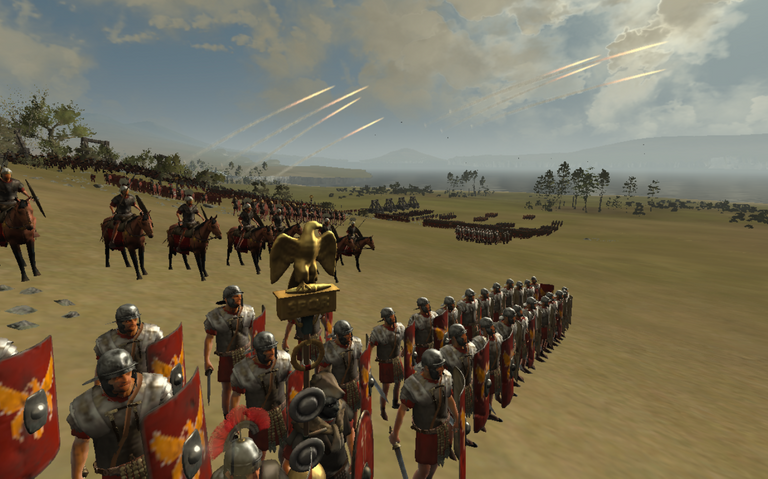
So this was a major project back in 2016, around the beginning of junior year in college. The university wind ensemble I was performing with was playing a major composition written by Robert W. Smith called "The Odyssey". It was a huge composition made up of four movements for wind band. It was one of the most memorable pieces I have played, not just because it was so fun to play, but it combined two of my favorite things: music, and history. I was a huge ancient western civilization fanatic so I love learning about this stuff. And being able to play things about it makes it a plus one. After the performance of this piece at our concert, I had a huge inspiration to write one of my own. This time, I thought I would write something to my interest of the Romans. Almost immediately, the first thing I thought of was the 3rd Servile War, also known as the War of Spartacus. Quick note about it, for those that don't know about the 3rd Servile War. It was a major war between the Roman Republic and the slave population. The slaves were led by a gladiator known only as Spartacus. And he would almost bring the Roman civilization to ruin.
Back to my composition. It was settled that I would write my first wind-band symphony based off of the Spartacus rebellion. What you're about to hear is the first movement of the symphony. I was unable to complete the other 3 movements because of college, but I do intend to finish this symphony. Again, you will be the first to hear the rest of the composition when it's done! In the Musescore community, this composition took 1st place in the 4th Epic Composer Competition. (btw, according to resources, the way you spell Spartacus in latin is with another a between the s and p. So I did not spell it like that on purpose).
Diagnosis: Movement I: "Victoria Romana" ("Roman Victory"). This movement brings to life the setting of the mighty legions of the Roman Republic. It starts off with a fanfare between the horns, timpani, and the trumpets. It then comes to a large extension of that fanfare with the rest of the band. It brings it back down to a slow melodic transition and then it returns to the large repeating of the beginning fanfare. The vivace fast section signifies battles between Rome and her enemies. The slow middle part signifies the first day of its battle ending and night coming. A tense dance between the saxophones brings out the tense irony between battles, soldiers have merry fun and relax before beginning the battle again the next morning. Then, the short rendition of a fanfare comes back representing the battle is about to start again. The vivace fast section comes back and at the very end, a very similar reprise of the beginning fanfare comes back, but this time it's mostly in major, representing the Roman victory over the enemy.
NOTE: HEADPHONES RECOMMENDED
I give you the first movement of "Sapartacus Adversus Mundi"! Mov. I: "Victoria Romana"
Thanks for reading and listening! If you like what you hear and see, please let me know in the comments below!
~ Joshua A. I.
Photo Source: I actually snapshotted this photo in Total War Rome II.
Great music man. It gives me goosebumps when I full blasted my audio. :)
@pinaynomad Thanks! I'm happy to hear you say that =)
Absolutely amazing!